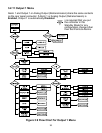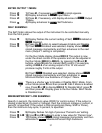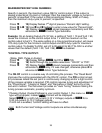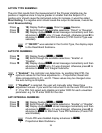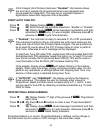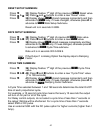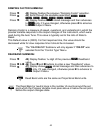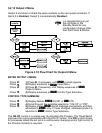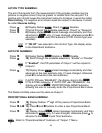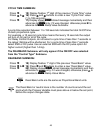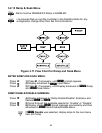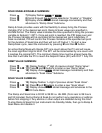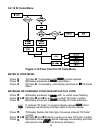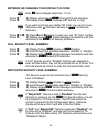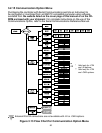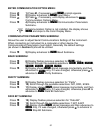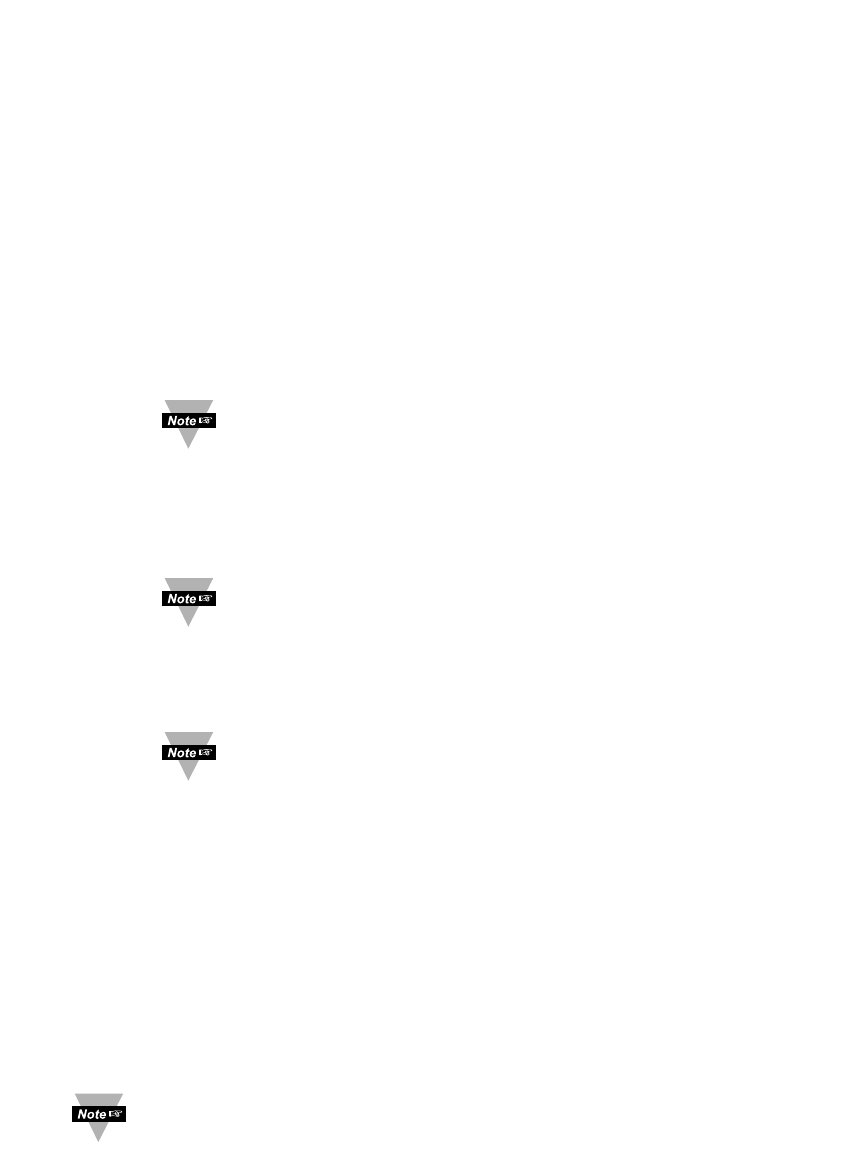
ACTION TYPE SUBMENU:
The error that results from the measurement of the process variable may be
positive or negative since it may be greater or smaller than the set point. If a
positive error should cause the instrument output to increase, it would be called
Direct Acting. If a negative error should cause the output to decrease, it would
be called Reverse Acting.
Press
d
6) Display flashes
DRçT
Direct or
RVRS
Reverse.
Press
b
7) Scroll through the available selections: “Direct” or “Reverse”.
Press
d
8) Display shows
STRD
stored message momentarily and then
advances to
AUTo
only, if it was changed, otherwise press
a
to
advance to
AUTo
Auto PID Submenu (If PID Control type was
selected).
If “ON.OF” was selected in the Control Type, the display skips
to the Dead Band Submenu.
AUTO PID SUBMENU:
Press
d
9) Display flashes
ENBL
Enable or
DSBL
Disable.
Press
b
10) Scroll through the available selections: “Enable” or “Disable”.
If “Enabled”, the PID parameter of Output 1 will be copied to
Output 2.
Press
d
11) Display shows
STRD
stored message momentarily and then
advances to the next submenu only, if it was changed, otherwise
press
a
to advance to the next submenu.
If AUTO PID was “ENABLED”, the display skips to the
CYCL
CYCLE TIME submenu. If “AUTO PID” was “DISABLED”, the
display will show
PRoP
PROPORTIONAL BAND Submenu
allowing the user to manually enter the Proportional Band value.
The Reset and Rate value are the same as Output 1.
PROPORTIONAL BAND SUBMENU:
Press
d
12) Display flashes 1
st
digit of the previous Proportional Band
value.
Press
b
&
c
13) Press
b
and
c
buttons to enter a new Proportional Band
value.
Press
d
14) Display shows
STRD
stored message momentarily and then
advances to
CYCL
only, if it was changed, otherwise press
a
to
advance to the
CYCL
Cycle Time Submenu.
Refer to “Proportional Band” Submenu of “Output 1” Menu.
44



